Without data and data analysis, modern digital marketing is now unthinkable. As marketers, we want to use our budget as effectively as possible, optimise our performance marketing, reach our target audience in the best possible way and convert them on an optimised website. Ultimately, we all try to convert our users into profitable customers with the right communication at the right time. But that is easier said than done. One thing is certain: we need data on how users interact with our brand, marketing activities and digital products.
Digital analytics has become a very broad and sometimes confusing field. Despite complex legal and technical frameworks, digital analytics will continue to lay the foundation for data-driven marketing in the future. However, what usually starts with campaign and conversion tracking can develop into so much more.
In this article, we will give you an overview of the differences between the various digital analytics tools and which tool is best suited to your requirements.
The tool jungle
There is no clear demarcation in the tool jungle and tools clearly overlap with their features. However, in the following graph we try to guide you in your search for the most suitable tool.

The tool selection
In the following paragraphs, we lay out what the individual categories mean exactly and which tools belong to them. In addition, there is a brief overview of the country of origin for each tool, information on the size of the company for which the tool is particularly suitable, and a price estimate.
Marketing Analytics
Do you focus on more specific marketing use cases, e.g. advanced attribution modelling or deep performance analysis within a channel? Then you will find the right solution in this category. It is not about the “big picture”, but about specific marketing analytics possibilities. In other words: tools that come up with a special focus. Here you will find solutions for social media monitoring, brand analysis, SEO, and many more. At a high level, this can often be achieved with the “holistic” tools, but your specialists may need more. The target group is usually the corresponding team, e.g. the SEO team for SEO tools. Below you will find some examples:
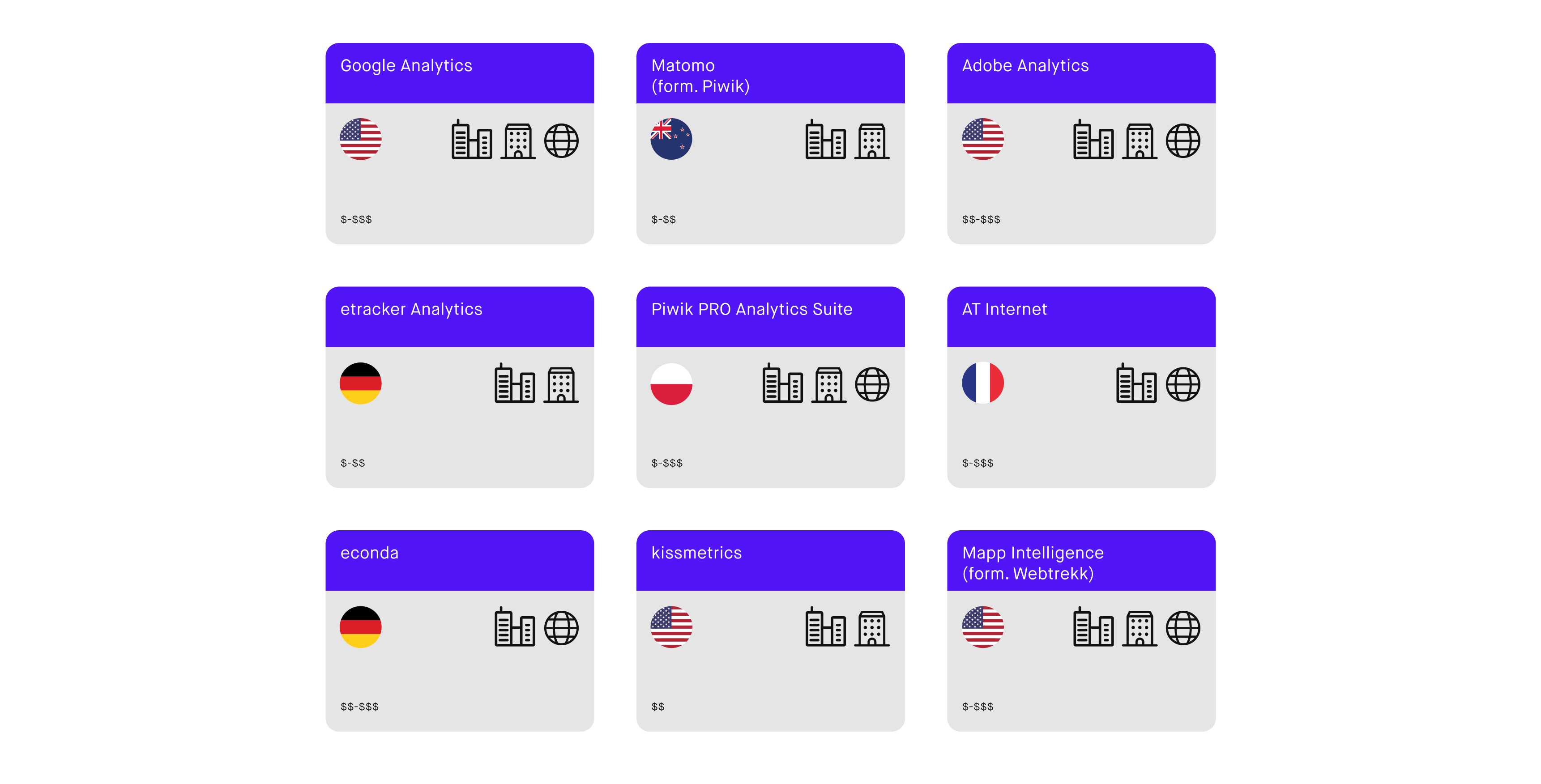
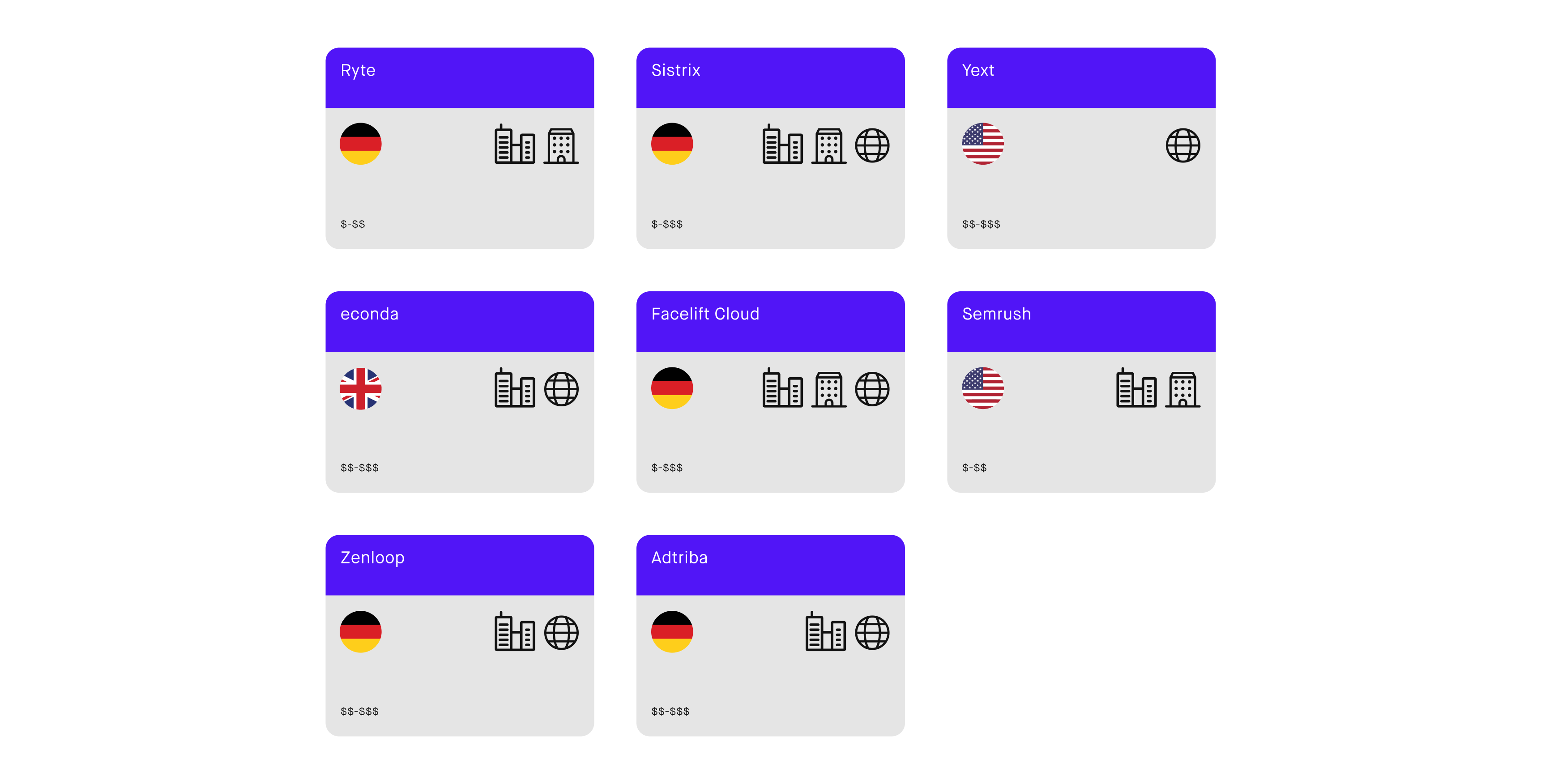

Product Analytics
If you are more interested in understanding how you can improve your digital products to ensure the best possible customer experience – or even just to increase sales impact – then you are better off in the Product Analytics category. This is less about effective use of the marketing budget and more about analysing product-specific issues. How do users interact with your product detail pages? Do they look at product images, reviews or delivery conditions? Is on-page search used and how do users react to the search results? What would your company have to change about the existing products to improve the user experience? Answers to these questions can be found in this category.
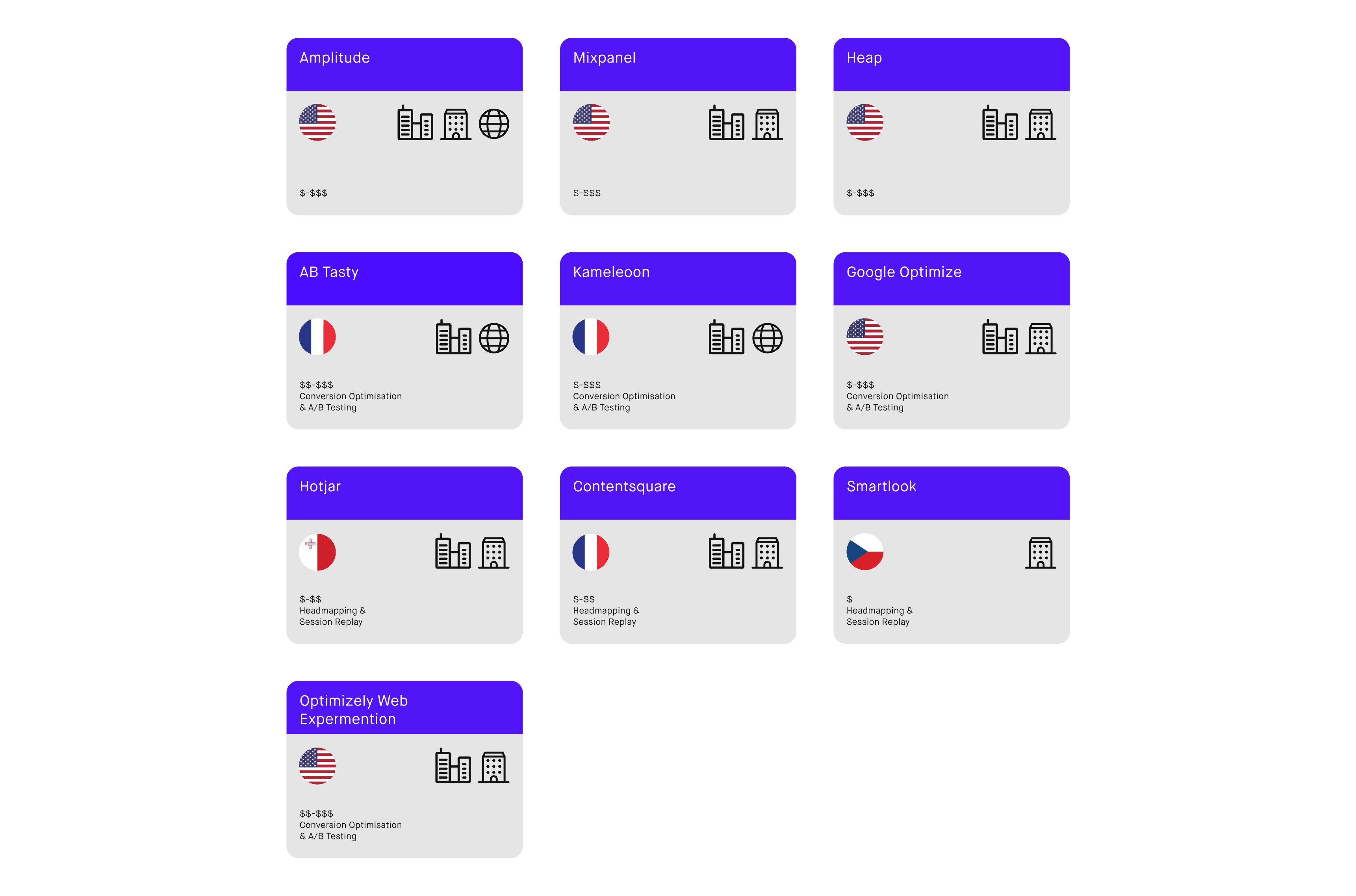
Business / Marketing Intelligence
If the standard reporting and analysis capabilities built into many tools are no longer enough for you, the next steps here are for you. Reporting automation across all channels (incl. costs & ROI) sound exciting? Then take a look in this category. There are now suitable solutions for every situation, especially to reduce manual effort. Later on, you can expand the setup and make it self-service capable so that your colleagues can gather the insights themselves without having to rely on ready-made reports.
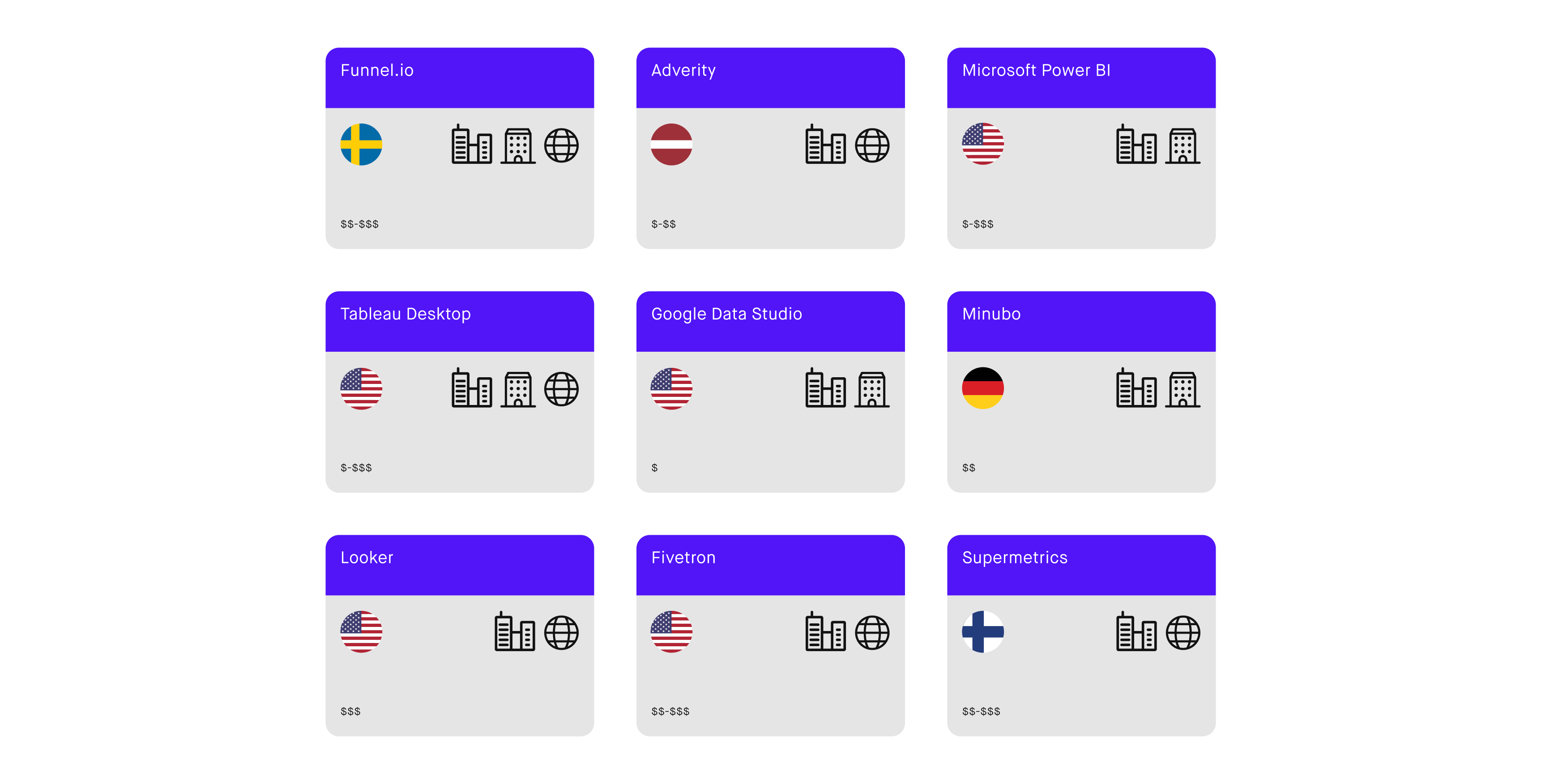
CDP / All-in-one
Some solutions are difficult to classify because they come across as very broad and powerful. If you can live with generalist tools from a single source, you could be in good hands here. But be aware of the strong dependency on the solutions. We have also placed the current trend topic Customer Data Platform (CDP) here. Such a solution is understood to be more of a platform for various use cases – a lot is possible, but whether you really need it or can make use of it is something you should consider.
A big advantage of these platforms is certainly the integration of the individual components. Especially when it comes to data activation, a CDP will make your life a lot easier compared to if you had to combine many individual tools.
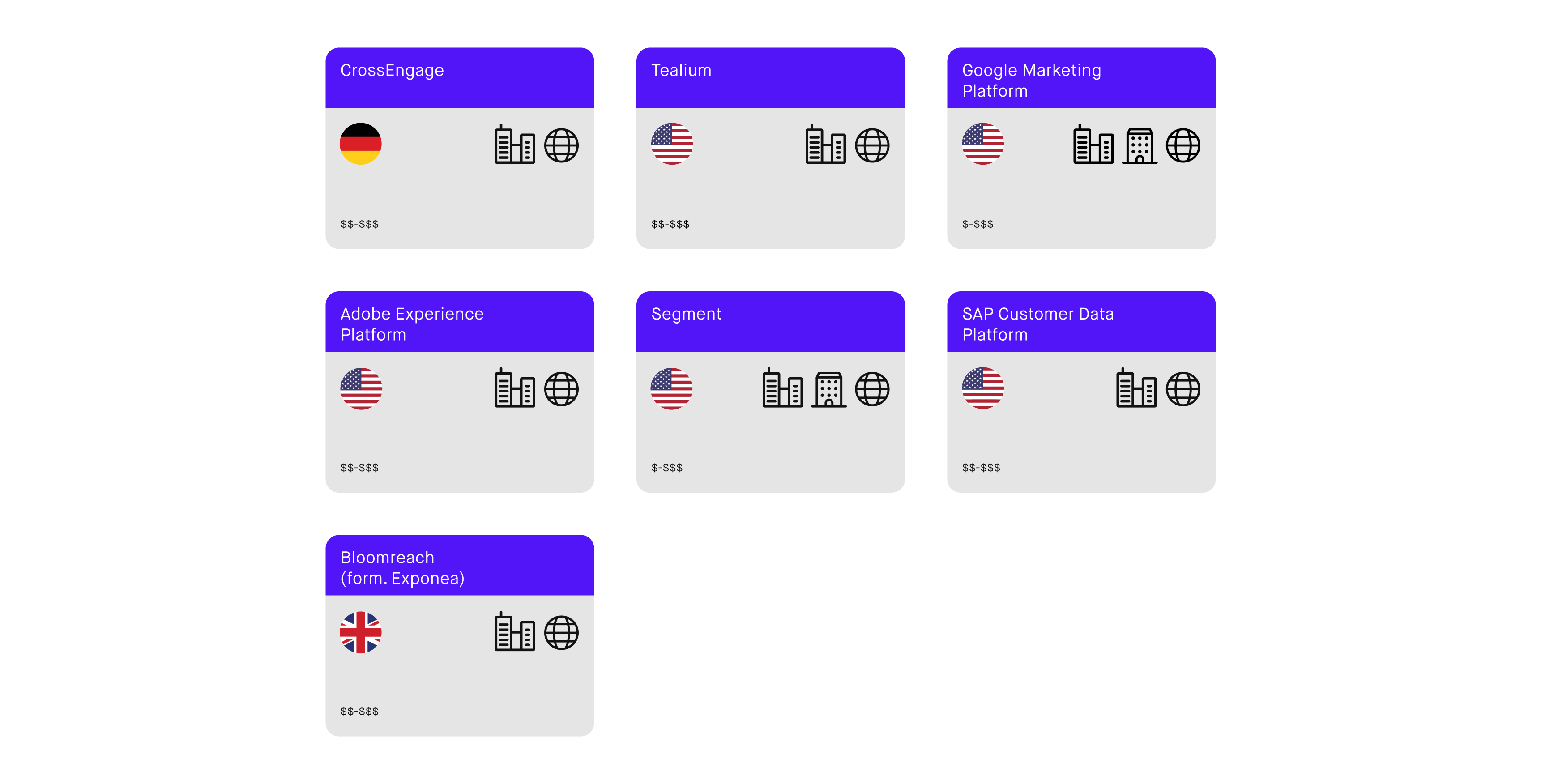
Others
There is still room for an “Others” category, which is so special that we have separated it out. Here, special requirements such as competitive analysis (e.g. via Similarweb) or consent management (including Usercentrics, Borlabs Cookie or SAP Enterprise Consent and Preference Management) are dealt with. We have also not considered mobile-first or mobile-only tools (such as Adjust) in this article, even though they have very similar functions to those mentioned above.




